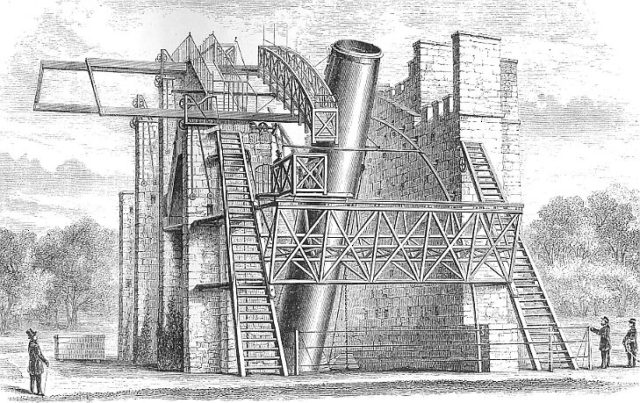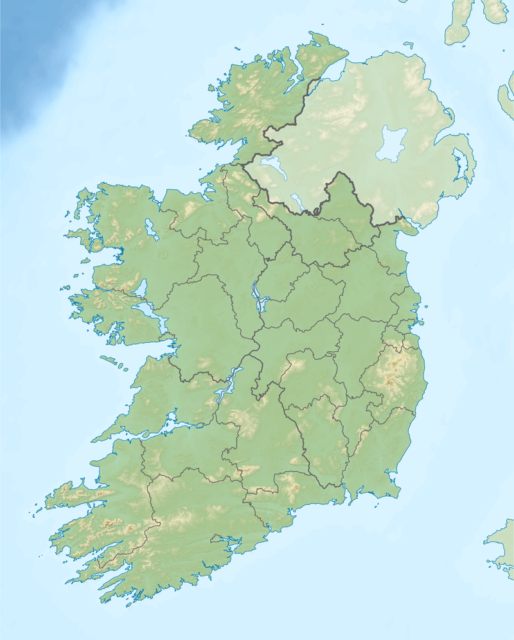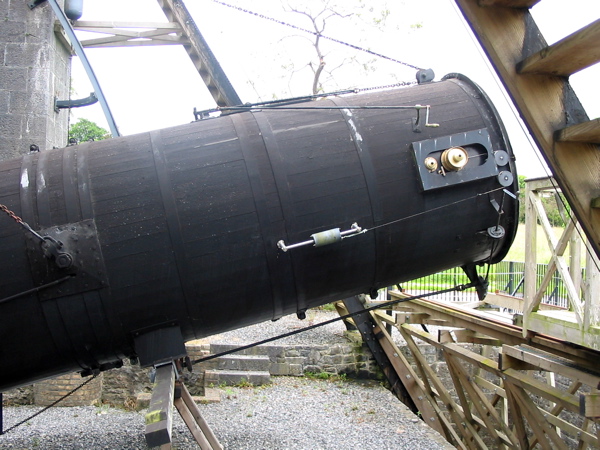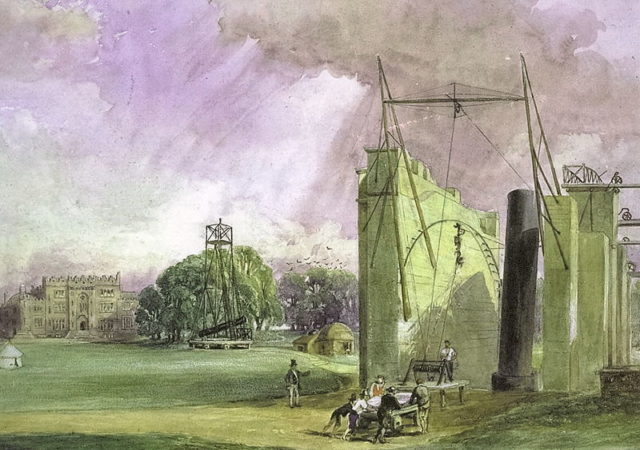In the early 1840s, William Parsons, the third Earl of Rosse in Parsonstown, Ireland, decided he was going to create the largest telescope in existence.
William Herschel, a pioneer in astronomical studies, had constructed a telescope in 1774, with which he discovered over 5,000 nebulae. He also discovered that Uranus was not a distant star, but a planet in our solar system. As well, he identified the moons of Uranus and Saturn. Unfortunately, Herschel left no notes on how to construct the large mirrors necessary for telescopes to collect light; his would have been the largest mirror ever made.

So Parsons had to start from the beginning. It took several years of hard work, and mirrors that failed or were broken, but the result was a 72-inch diameter, 3-inch thick mirror made of 1.5 tons of a tin and copper alloy. The burning hot, liquefied metal was moved to the mold with cranes and then cooled for 16 weeks. The new technology of steam-powered tools enabled Parsons to complete the work much faster than Herschel had. It was Parsons’ intention to make two working mirrors in order to have one to use while the other was being cleaned and polished, since the copper in speculum mirrors tarnished quickly. The tube and supportive base were completed in 1845. The device was so large the locals began to refer to it as the “Leviathan”.

The tubing was reinforced near the mirror with a hinge and two devices that allowed the tube to incline, giving the scope a substantial range of altitude. Fifty foot tall and seventy foot long supporting walls held the tube on both sides. A set of chains, pulleys, and counterweights kept the telescope in balance and controlled the altitude. The tube was of a Newtonian design, with the eyepiece located on the side. The device looked almost like a cannon pointing to the sky.

With it, Parsons was able to examine the nebulae noted in the findings of Herschel and his colleague Charles Messier and verify the star clusters and nebulae they had discovered. Parsons realized several nebulae had a spiral type arrangement, such as Messier 51, the Whirlpool Galaxy; many were not nebulae at all, but single galaxies.
He studied and named the Crab Nebula and also studied the Orion Nebula. After William Parsons died in 1867, Laurence Parsons, the Fourth Earl, continued to operate the telescope. J. L. E. Dreyer used it from 1874 to 1878 and began the compilation of the New General Catalogue of Nebulae and Clusters of Stars.

The Leviathan telescope remained in use until about 1890. It was partly dismantled after Laurence Parsons died in 1908, and in 1914 the Science Museum in London claimed one of the mirrors and its box so these could be put on display.

The original walls, tube, second mirror box, and universal joint were used in the reconstruction of the telescope by the seventh and current Earl, William Clere Leonard Brendan Parsons. The telescope has been modified by adding a new mirror and a motor to aim the device more easily.

It still stands near the castle on the Parsons’ family estate in County Offaly, Ireland, along with a large display of artifacts and sky-watching instruments.
The attempt to use powerful telescopes in low-lying areas taught astronomers to look for higher elevations to reduce surrounding lights, and drier climates to keep the mirrors from tarnishing so quickly. In 1917, the construction and placement of the 100-inch Hooker Telescope at the Mount Wilson Observatory in California surpassed the Leviathan as the largest telescope in the world
